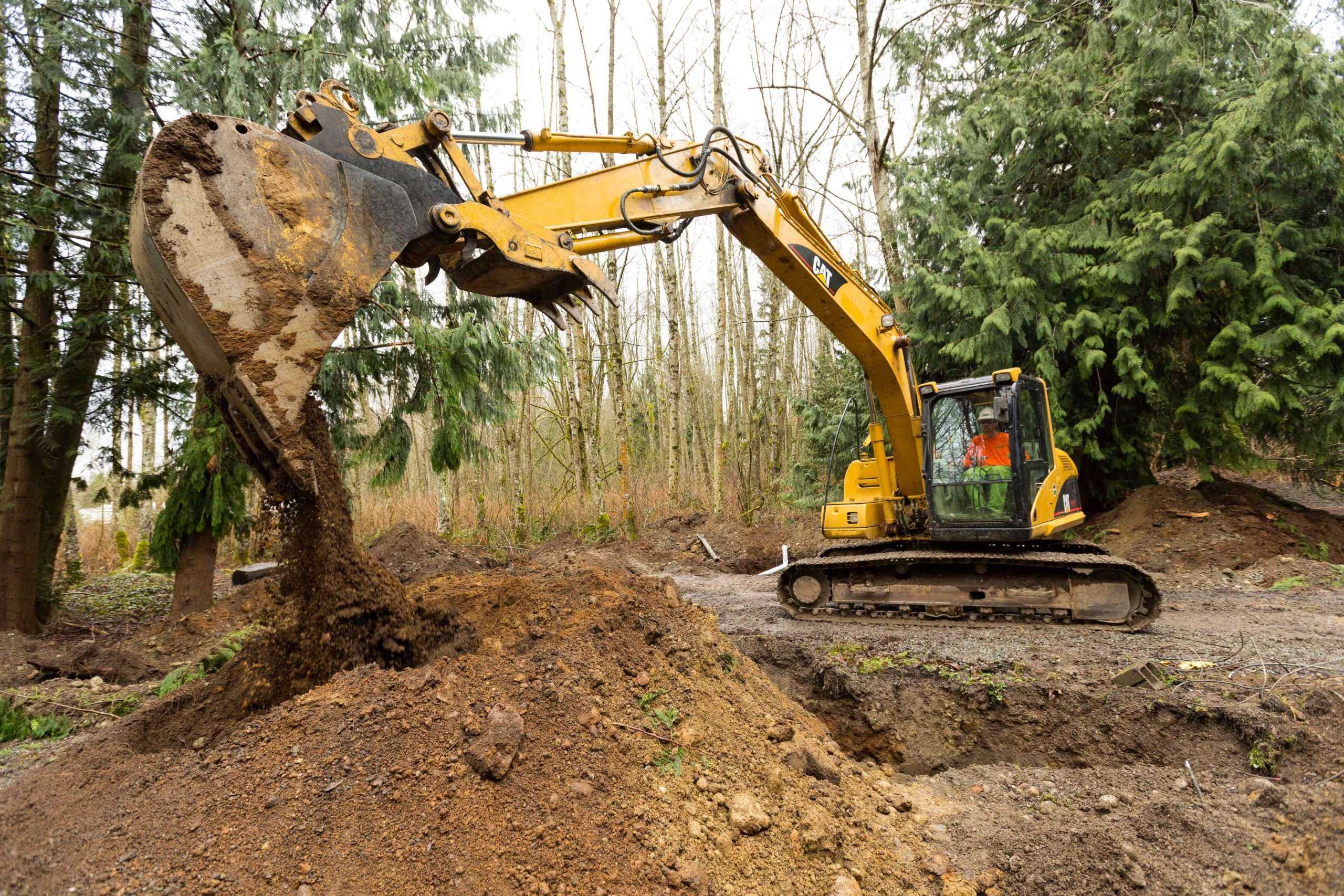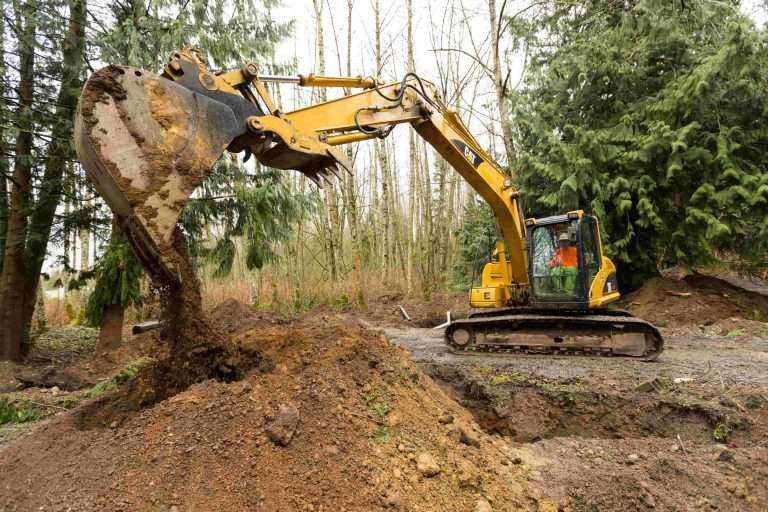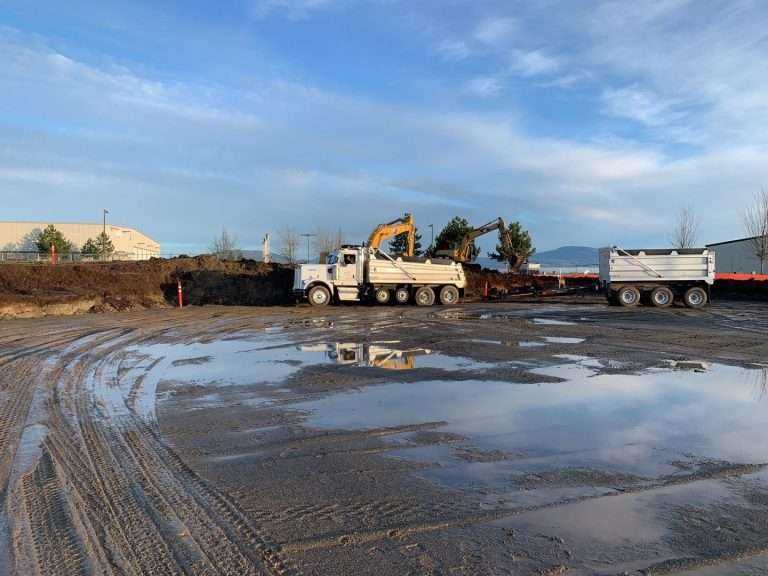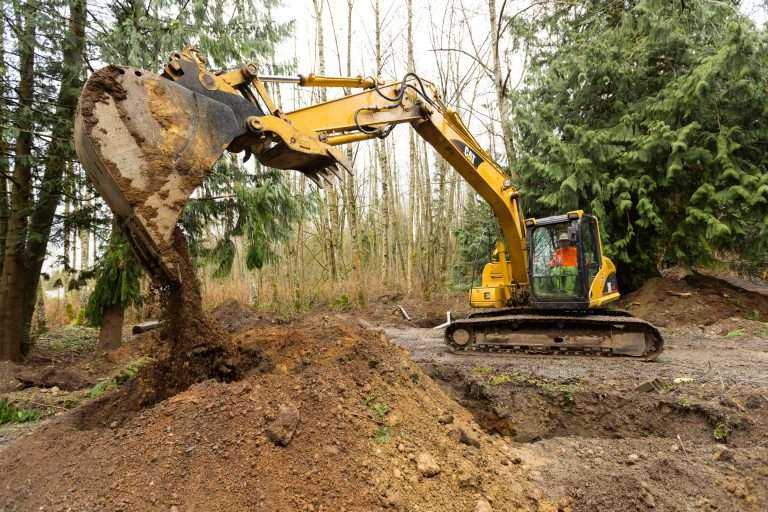What is an Excavation and Trenching plan?
Before getting into the nitty-gritty details, it’s important to understand the difference between excavation sites and trenches. Excavation is when the ground of a site is dug out. On the other hand, a trench is generally an area of excavation where the ground is deeper than it is wide.
When working on a job that requires excavation and trenching, it is absolutely vital to have a plan in place. Excavation and trenching sites can be hazardous, and potentially life-threatening if not prepared and painted properly. However, with proper planning, you can prevent these hazards before the digging even begins.
This is why CF Excavating places a focus on the planning stages. This way, we can reduce risk and ensure that we complete excavation projects on time.
What Is An Excavation and Trenching Plan?
Excavation and trenching sites are perhaps one of the most dangerous sites to work on. Weather conditions and ground conditions can cause soil from caving in. Overhead machinery is large and could become unstable.
Many aspects can contribute to these hazards becoming a reality, such as the amount of time spent working, the weather conditions, the number of people, as well as the soil conditions.
An excavation or trenching plan is a document that the excavation company prepares prior to project start. It includes a hazard assessment, project requirements, safety procedures for workers to follow, and more. It sets down an understanding of all the dangers involved when working on the site and a plan on preventing them. The point is to ensure the health and safety of all the workers on site.
Why Is It Necessary
The Occupational Safety and Health Act of 1970 ensures safe working conditions for working men and women. This sets a standard that each company operating on a dangerous working site, such as excavation and trenching sites, has to adhere to.
Workers at excavation or trenching sites could be exposed to cave-ins, collapses, as well as hazardous atmospheres such as dust and gas. Moreover, there may be hidden threats – such as service electrical lines that run underground. These workers also handle heavy and dangerous machinery.
In short, these sites can be very dangerous and could fatally affect a worker’s life. By setting down a proper structure and plan, you avoid unnecessary injuries. Not only is it required by law, but it helps get excavation projects finished successfully.
By protecting and taking care of the workers, we can get better project results with fewer delays as there is decreased risk.
What The Excavation and Trenching Plan Should Include
When setting down an excavation or trenching plan, there are a few things to consider.
Specifications and Procedures
Before anything happens, it’s vital to conduct a hazard assessment. This is a simple procedure where we, as the excavation company, go through to the excavation site with you. Here, we will analyze the ground, the machinery, as well as the location. This helps us to identify any hazards and risks.
The next step is to lay out a plan to mitigate the risk as much as possible. It’s crucial to identify the soil type(s) on the site, buried services, overhead power lines, and so on. This helps the excavation team to set up plans and a checklist of things to do before they can begin work. It also helps to understand what equipment will be necessary and lay out the personal protective equipment that the workers will require.
Steps need to be in place to prevent overhead soil from falling on the workers. The excavation and trenching plan should detail which trees and man-made or natural facilities need to be cleared. It’s also critical to include flooding prevention as well as an evacuation procedure.
The plan will outline the projected depth of the excavation based on soil types. It should also include the planned method of shoring, sloping, or benching.
Site Management Plans
Once we have a good understanding of the exact specifications of the site, we can start planning the trenching and excavation.
In this planning stage, it’s important to determine the space within the trench as well as the space for entering and exiting the trench. Here, it’s vital to consider traffic control inside and outside the trench, and include details on how the site manager should manage it. The plan also needs to include a management plan for excavated soil or asphalt.
Final Thoughts
An excavation or trenching site is not only dangerous but could be life-threatening to those working there. Many aspects contribute to this, including location, soil type, and neighboring buildings. Fortunately, a lot of the dangers on these sites are preventable – as long as there is proper planning before excavation begins.
At CF Excavating, we take the time to plan everything out and ensure we minimize risk as much as possible. Not only does this keep our workers safe, but it ensures that projects run smoother.




